I'm trying to make a simple Pygame application where some colors are blended with colors under them. Here is my code:
code-listing 1:
import pygame, sys, time
from pygame.locals import *
#define constants
WINDOW_WIDTH = 600
WINDOW_HEIGHT = 600
FPS = 60
pygame.init()
clock = pygame.time.Clock()
screen = pygame.display.set_mode((WINDOW_WIDTH, WINDOW_HEIGHT), 0, 32)
alpha = 0
increasing = True
while True:
for event in pygame.event.get():
if event.type == QUIT:
pygame.quit()
sys.exit()
#fill screen with red
screen.fill(pygame.Color(247, 25, 0,255))
alpha_surface = pygame.Surface((screen.get_rect().width, screen.get_rect().height))
alpha_surface = alpha_surface.convert_alpha()
surfaceRect = alpha_surface.get_rect()
#fill surface with orange
pygame.draw.rect(alpha_surface, (247, 137, 0, 255), (0, 0, 480, 480))
#fill surface with translucent yellow
pygame.draw.rect(alpha_surface, (220, 247, 0, alpha), (120, 120, 360, 360))
#fill surface with green
pygame.draw.rect(alpha_surface, (0, 247, 4), (240, 240, 240, 240))
#fill surface with translucent blue
pygame.draw.rect(alpha_surface, (0, 78, 247, alpha), (360, 360, 120, 120))
screen.blit(alpha_surface, (120,120))
pygame.display.update()
clock.tick(FPS)
if increasing:
alpha += 1
if alpha > 255:
alpha = 255
increasing = False
else:
alpha -= 1
if alpha < 0:
alpha = 0
increasing = True
the code is supposed to make it so the yellow rectangle blends with the orange rectangle and the blue rectangle with the green rectangle. Instead I am getting something that goes from this:
figure 1: original state with yellow and blue opacity set to 0%

to this:
figure 2: final state with yellow and blue opacity set to 100%

As you can see the yellow and blue rectangles not only blend with the red rectangle (screen surface) but they also make a hole to the orange and green rectangle so that we can see the red rectangle through them.
